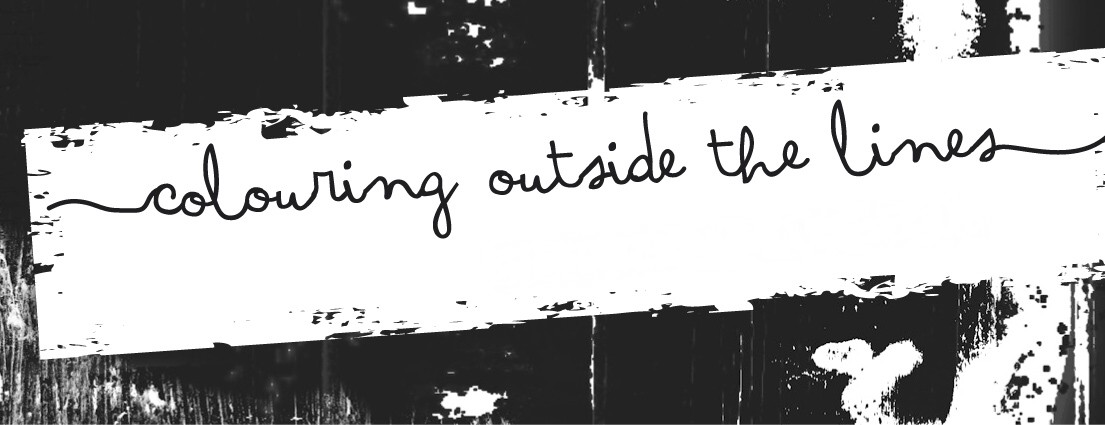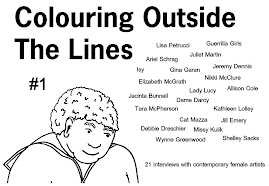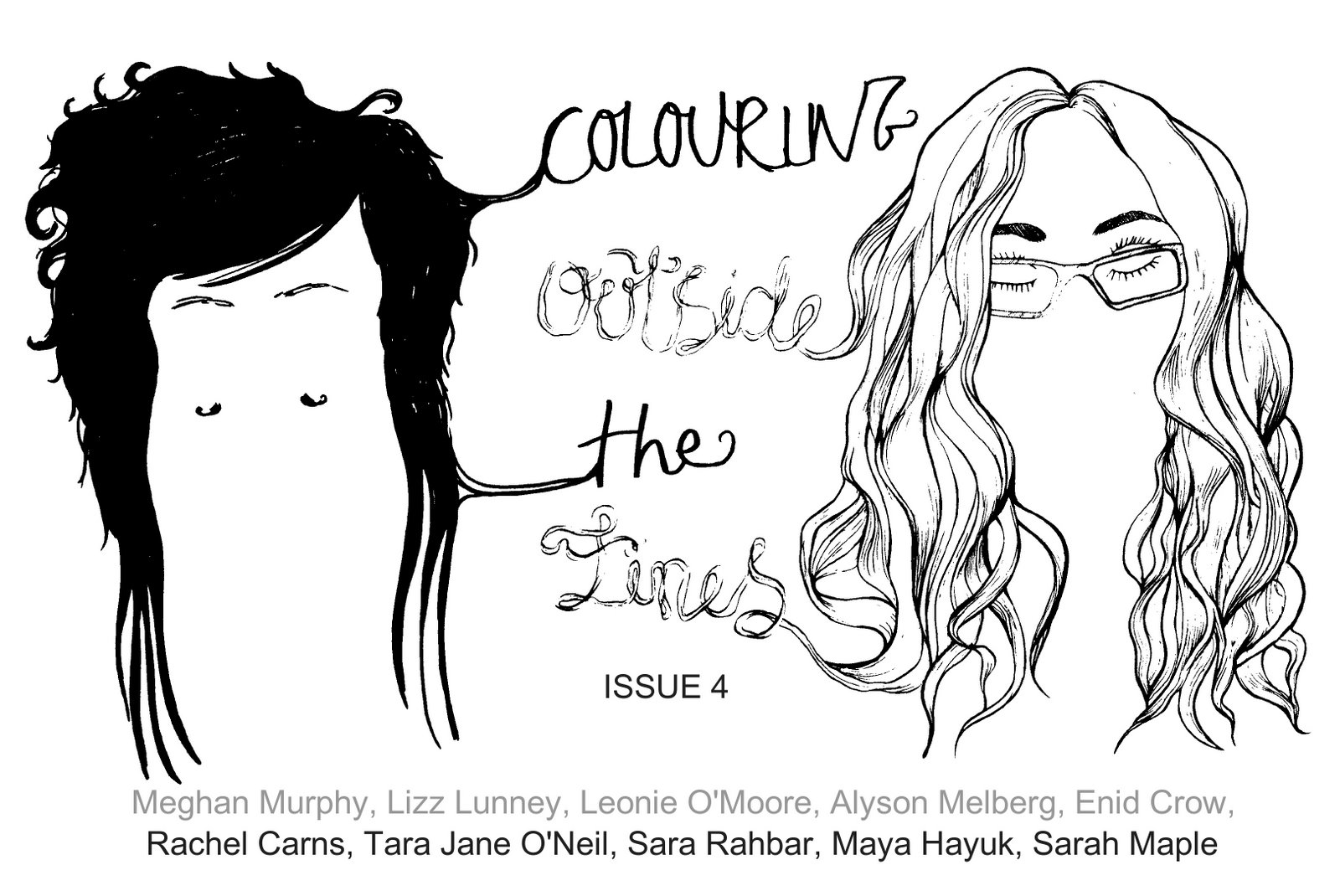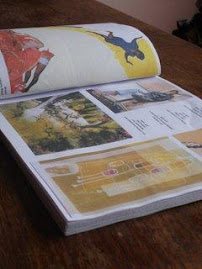


Marion Peck
* Location: Eagle Rock, CA.
* Location: Eagle Rock, CA.
* How would you describe your art? Pop Surrealism, for lack of a better term.
* Currently working on: Just finished a show called The Dearly Departed at Mondo Bizzarro gallery in Rome. Will soon start work on a show for Billy Shire Fine Art Gallery in Los Angeles for spring 2007.
* Day job (if applicable): NA, lucky me.
* 3 Likes: Animals, Wine, Astrology
* 3 Dislikes: George Bush, The Pope, Conceptual Art
* Daily Inspirations: Mark Ryden
* People & artists you admire: James Hillman, Hippies, Hans Memling
* Favourite album to work to: Hildegard von Bingen, a Feather on the Breath of God
http://www.marionpeck.com/
- - -
This interview took place in March 2006. All images reproduced with permission from Marion’s website (http://www.marionpeck.com/) © Marion Peck.
This interview took place in March 2006. All images reproduced with permission from Marion’s website (http://www.marionpeck.com/) © Marion Peck.
- - -
Hi Marion, how are you? What are you up to at the moment?
I am taking a breath between shows. Catching up on email, cooking a huge pot of chicken soup, potting plants, re-organizing my linen cupboard, etc. for a few days at least. It’s nice.
I am taking a breath between shows. Catching up on email, cooking a huge pot of chicken soup, potting plants, re-organizing my linen cupboard, etc. for a few days at least. It’s nice.
How did you first become interested in art, and learn of your artistic talents?
I always knew that I wanted to be an artist, since I was very small. My parents were very nurturing and supportive of my art. My mother had a lot of good art books that I would look through, and I started drawing copies of Botticellis and Raphaels when I was 8 or 9 years old. I always got good feed back from teachers, etc. It just has always been that way from the get go.
I always knew that I wanted to be an artist, since I was very small. My parents were very nurturing and supportive of my art. My mother had a lot of good art books that I would look through, and I started drawing copies of Botticellis and Raphaels when I was 8 or 9 years old. I always got good feed back from teachers, etc. It just has always been that way from the get go.
You use a lot of oils on panels. How did your work develop to using this medium? Is oil painting the most comfortable medium for you to work within?
Definitely. I love oils. I only used acrylics briefly in high school, and quickly switched to oil paint. It is just so much better. I have recently begun making more finished drawings with graphite. For my last show I did some experiments with dipping my drawings in beeswax. I’m excited about doing some other experiments for the next show. We shall see. But oils are what I love the most.
Definitely. I love oils. I only used acrylics briefly in high school, and quickly switched to oil paint. It is just so much better. I have recently begun making more finished drawings with graphite. For my last show I did some experiments with dipping my drawings in beeswax. I’m excited about doing some other experiments for the next show. We shall see. But oils are what I love the most.
How prolific an artist are you? Do you find creating art works to order, or to meet specific deadlines creatively useful, or restricting?
I am not very prolific at all. Each painting seems to take me longer and longer to complete. An average painting takes me about a month, now. It’s almost necessary for me to have a deadline. Otherwise I would just take forever to finish a painting. So far as making artwork to order, I haven’t done that for awhile. Creatively speaking, it’s not always the absolute worst thing in the world to have some perimeters set for you by someone else, but still I avoid it. I would rather do my own thing.
I am not very prolific at all. Each painting seems to take me longer and longer to complete. An average painting takes me about a month, now. It’s almost necessary for me to have a deadline. Otherwise I would just take forever to finish a painting. So far as making artwork to order, I haven’t done that for awhile. Creatively speaking, it’s not always the absolute worst thing in the world to have some perimeters set for you by someone else, but still I avoid it. I would rather do my own thing.
I read that you lived in Italy for a few years, absorbing art, landscape and food.
Yeah. It was great.
Yeah. It was great.
Some of your art pieces appear to adopt, or to be influenced by European artistic styles such as that of regal, traditionally historical portraits in oils (as shown in pieces of your art such as Hair and Lady Henrietta Swanneshald.) How much of an influence was your time in Europe on some of your artistic styles and techniques?
Well, I went there because I was so attracted to that stuff to begin with. Being there just deepened my relationship with it, and it did that quite a bit.
Your Erotic Suite pieces from 2000 combined themes from modern pornography with erotic art from other cultures and eras (such as Lil’ Lesbians adapted in the style of Chinese drawings, and Kowboy Karma sutra in traditional Indian/Asian styling).How much of these pieces come from a personal interest in alternate cultures and their unique artistic forms and expression (sexual or otherwise)?
A lot of the art I respond to has certain stylistic qualities in common, a flattened sense of space, a certain quality. I think this is what drew me to these non-western sources. The universality of sexual fantasies made combining modern and ancient, western and non western sources even more interesting.
Your work has been classified within the Pop Surrealist / Lowbrow art movement. What are your thoughts on these terms, and what do they mean to you, and feel they say about your art?
They’re fine with me. Whatever. It doesn’t really matter what ‘the movement’ is called. It is just interesting that there is a movement at all. Even though I don’t feel like my work has a lot in common with a lot of the other artists who are grouped under these classifications, what we do share in common is a return to figuration and a dissatisfaction with the sterile intellectual elitism which modernism created.
They’re fine with me. Whatever. It doesn’t really matter what ‘the movement’ is called. It is just interesting that there is a movement at all. Even though I don’t feel like my work has a lot in common with a lot of the other artists who are grouped under these classifications, what we do share in common is a return to figuration and a dissatisfaction with the sterile intellectual elitism which modernism created.
You once stated that ‘my paintings are of no certain breed, but rather mutts that contain characteristics of their purebred ancestors’. Developing this statement, you appear to mix together ‘lowbrow’ (‘pop surrealism’, ‘erotic art’) with ‘highbrow styles’ (oil painting, portraits, some traditionally historical pieces). How important to you is mixing styles and approaches to produce your art? Is approaching art form many different approaches more stimulating and exciting for you, as an artist? Do you feel this approach to art challenges the elitism in conventional ‘high art’?
The mixing is crucial to my work, absolutely. In bringing together disparate elements, in juxtaposition, I feel the sparks of inspiration fly. The juxtaposition of different things creates for me a kind of clarity, an ability to look at the world and life from more than just one solidified, calcified point of view, and I find this very freeing and very joyful. I do feel that this approach challenges conventional high art, very much so. The attitude of High Art has become so bitter and saturnine. Elitism is absolutely inherent to it, yet it denies its own elitism, and so it is inherently hypocritical, awkwardly self involved and utterly self-conscious. Students are taught to be artists solely by means of criticizing and being criticized, putting them in a totally defensive posture from which it is almost impossible to create art. High Art has set itself up as the judge of our society, condemning capitalism and power structures even while it partakes of them. In short, High Art turned into a total drag. If, instead, we open ourselves, look around with open eyes, looking at the world of popular culture, for example, and let ourselves get into it and maybe even let ourselves enjoy it, rather than automatically condemning it, as High Art does, how much opens up to us, how much more we can respond to beauty and soul in the world all around us as well as in art. It is like fresh air.
Roq La Rue Gallery, of your 2003 exhibited work, said that it is ‘infused with a new countercultural pop tone and a brighter colour palate, the paintings still covey a sense of the murky, yet magical, corners of the subconscious - enigmatic, sensual and endlessly fascinating’What is your relationship to the term ‘countercultural’; do you feel this is an adequate description of your work and your aims as an artist?
I am a weirdo, to be sure, so I of course identify with counterculture, which I take to mean the parts of our culture which are not identified with the mainstream. On the other hand, I am not interested in an overly rebellious stance that thrives only on polemics. I guess I think of myself more as an observer, if anything. Social commentary may or may not occur as a result of the work, but it is not it’s primary aim. The primary reason I make art is for people’s enjoyment.
I am a weirdo, to be sure, so I of course identify with counterculture, which I take to mean the parts of our culture which are not identified with the mainstream. On the other hand, I am not interested in an overly rebellious stance that thrives only on polemics. I guess I think of myself more as an observer, if anything. Social commentary may or may not occur as a result of the work, but it is not it’s primary aim. The primary reason I make art is for people’s enjoyment.
What has inspired what the gallery deems your ‘pop tone’? And how do you choose and decide upon your ‘pop’ subjects; what draws you to characters such as Barbie Benton and Jane Fonda, for example?
These things really have to come up spontaneously, you can’t direct them. The best you can do is to learn how to put yourself into a receptive state and wait for images to come. I suppose what makes me choose certain images over others is the presence of an archetype, but archetypes are not easy things to pin down. They are elusive as the dreams that vanish from our memories each morning. If you try to figure them out, you kill the magic.
These things really have to come up spontaneously, you can’t direct them. The best you can do is to learn how to put yourself into a receptive state and wait for images to come. I suppose what makes me choose certain images over others is the presence of an archetype, but archetypes are not easy things to pin down. They are elusive as the dreams that vanish from our memories each morning. If you try to figure them out, you kill the magic.
The ‘murky, yet magical, corners of the subconscious’ come from your involvement of your own dreams within your art, especially within your Dream Journal art where you reproduced, as faithfully as possible, images from your dreams. The majority of my dreams are pretty mundane, day to day activities played out again in my dreams. Is it more interesting for you as an artist to choose to depict your more ‘surreal’ dreams?
I chose the images for the paintings from thousands of dreams I had recorded in written form, but I wouldn’t say it was because they were more surreal; it was kind of like they were more graspable, doable. There are definitely dreams that are bigger, stronger, or stranger than others, but they are not necessarily the ones I could paint. I looked for the paintable ones.
What are your thoughts regarding the depiction of ‘fantasy’ within art versus depicting ‘dreams’ within art. Do you see a definition between the two? Does this definition have any bearing on Roq la Rue’s description of your art as a ‘more grounded sort of surrealism’?
I suppose that ‘fantasy’ refers to a more collective sort of dream image. Fantasy figures, figures from the world of mythology and entertainment come from the big dream we dream as a society, which we call our culture. It is fascinating to move between the personal and the societal dream, and I do not feel there is really any need to draw distinct borders between the two. They are all a part of the same big swirly thing.
Of your work and your ideas, you once stated: ‘for the most part, I don’t know where they come from. I see a photo of Barbie Benton, and I think to myself, “well, she should have a rodent head”’.
This playful, fun approach towards art sees you exploring more abstract thoughts and themes than many other artists. How important is humour or seriousness to you within your work?Is this more playful approach to art a response to, or from, working within ‘serious’ artistic circles and exhibitions at all?
Humour and playfulness are definitely key. They open things and people up. They take the inflated heroics out of art and allow it to speak more humbly. We often think that for something to be ‘important’ it must be very, very serious. Is this really true? A sense of humour is one of the most important tools for achieving enlightenment, according to Buddhist thought. There is also a new way of using or experiencing irony which I think is a peculiarly modern thing. I think irony used to entail an underlying snobbishness, a ‘knowing better’ of some sort. The kind of irony that interests me is a less judgmental one. It is still irony, but more accepting. In regards to kitsch, for example, this kind of irony accepts that kitsch is the main conveyer of emotional content in our society. So it celebrates kitsch, it does not condemn it.
'If there is a narrative in my paintings, I hope it is like a very short poem. I want them to speak slowly, carefully and quietly, not hiding their hesitation or stumbling. Their awkwardness is, to me, a part of their character’.
Does this statement you once made regarding what your art ‘says’ also include or reflect a position regarding spontaneity in art, embracing any mistakes and awkwardness that may occur? What are your thoughts regarding perfectionism in art?
Well, there is a kind of awkwardness that is good, and then there is another kind that is not good. I hope I am not being too obtuse here. What I mean to say is that there is a place for both, for spontaneity and embracing mistakes on the one hand, and for being a hard ass perfectionist on the other. Letting it all flow all the time leaves us with baby-playing-with-its-own-poop art, but too rigid a stance leads us to frozen cold places. Technique wise, I definitely think we need a good dose of perfectionism, but there needs to be an open mindedness that goes along with it. I hope this reply is not too awkward.
You have worked alongside other artists at shared exhibitions in the past. What do you most enjoy about shared exhibitions, and do you find exhibiting in this way lends anything to your work [both the work being displayed and subsequent work]?
Group shows are kind of strange things. It’s not so much that you work with other artists, you just get grouped together by the gallerist. I find all too often that I am grouped with other artists because of my gender. I am honoured to have shown with the artists I have shown with, and it can be very interesting to see one’s work alongside other people’s, but so far I have never had the experience really influence my work in a very strong way. It would be fun if that happened, though.
You once said: ‘So often we try to understand the meaning of a work of art, or for that matter when we look for ‘meaning’ in anything, we tend to put language first, image second. I believe the image comes first. The ever inexplicable, unresolvable mystery of the image is the source of magic and power in art’.
Is it frustrating for you then when reviewers and critics try to extort and decipher meaning in your work?
Yah. I suppose that’s just the nature of the beast, though. Criticism is by nature a literary endeavour, and I suppose they have to write something, don’t they? What bothers me is the undue emphasis that is placed on art criticism, and the way viewers, and even artists, let the words of critics interfere with their experience of art. We have to learn to trust ourselves again.
Yah. I suppose that’s just the nature of the beast, though. Criticism is by nature a literary endeavour, and I suppose they have to write something, don’t they? What bothers me is the undue emphasis that is placed on art criticism, and the way viewers, and even artists, let the words of critics interfere with their experience of art. We have to learn to trust ourselves again.
What for you are the most enjoyable and fulfilling aspects of being an artist?
Oh, trying to explain that would be kind of like trying to explain what I enjoy about having legs, or something like that. I am just very very happy to be an artist. There is nothing else I would ever want to be. I feel incredibly fortunate and blessed to be able to do my art, and I am very grateful for it.
Oh, trying to explain that would be kind of like trying to explain what I enjoy about having legs, or something like that. I am just very very happy to be an artist. There is nothing else I would ever want to be. I feel incredibly fortunate and blessed to be able to do my art, and I am very grateful for it.















No comments:
Post a Comment